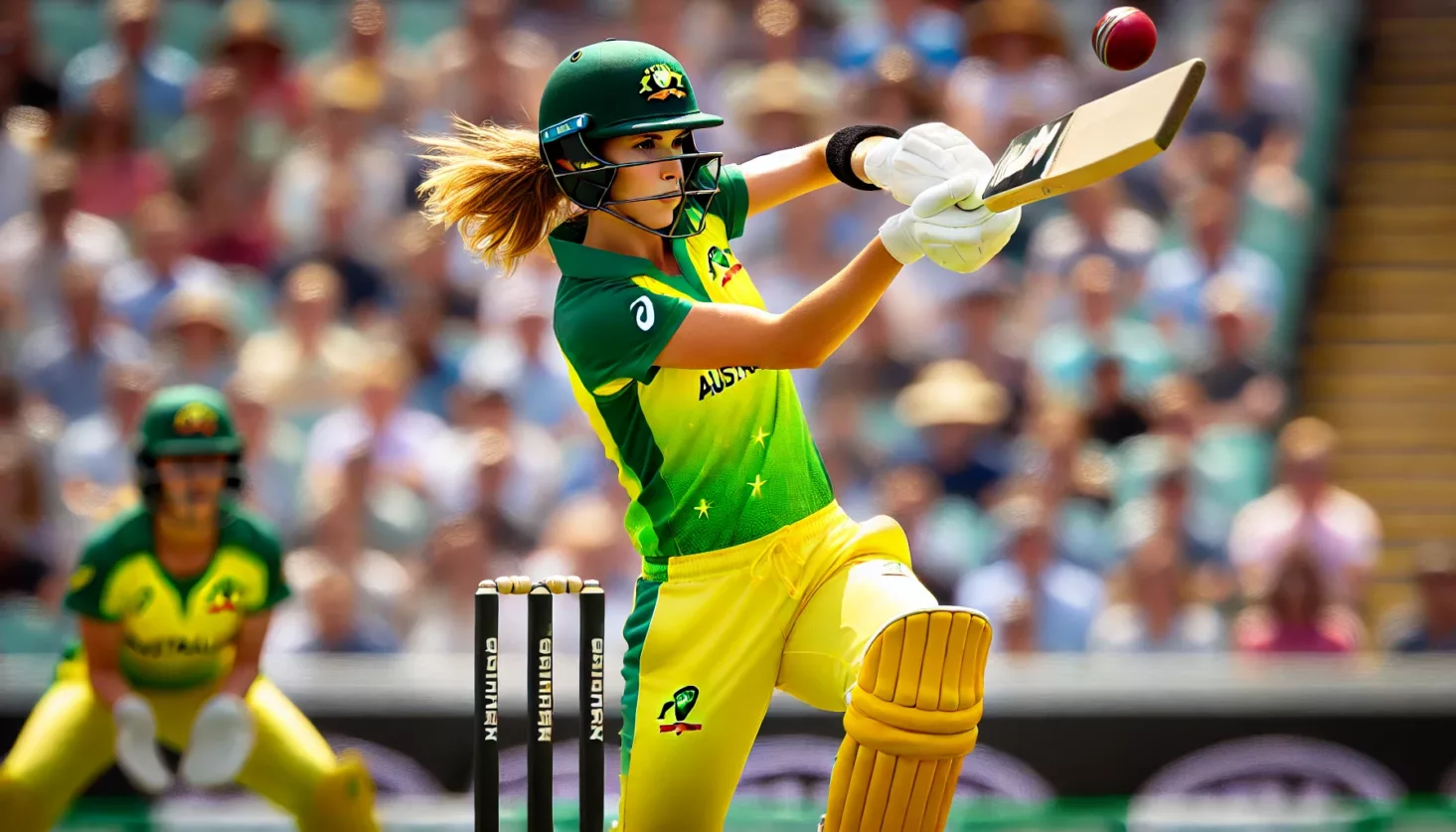
Women’s Cricket and Its Role in Empowering Women
The rise of women’s cricket has not only transformed the landscape of the sport but has also played a crucial role in empowering women across the globe. The history and evolution of women’s cricket traces a journey of perseverance, where athletes overcame societal challenges to establish themselves in a traditionally male-dominated arena. Over the years, remarkable achievements and records in women’s cricket have highlighted the prowess and determination of female cricketers, showcasing their ability to compete at the highest levels.
However, the journey has not been without obstacles. The challenges faced by women cricketers include limited access to resources, training facilities, and financial support. Despite these hurdles, women’s cricket has become a powerful platform for promoting gender equality. The sport has provided a space where women can assert their rights, challenge stereotypes, and inspire future generations to pursue their passions without fear.
The impact of women’s cricket extends far beyond the boundaries of the pitch. As a tool for social change, it has contributed significantly to women’s cricket and its impact on society, enabling women to break barriers and lead in various fields. Sponsorship opportunities have also expanded, with companies recognizing the value and potential of investing in women’s cricket and sponsorship opportunities. This has not only increased visibility but also financial independence for female athletes.
The fight for women’s cricket and the fight against sexism continues as the sport advocates for equal opportunities and fair treatment. Fan support plays a vital role in this endeavor, as the importance of fan support helps to elevate the status of women’s cricket and encourage broader societal acceptance. Additionally, the inclusion of diverse cultures within the sport has enriched the game, fostering a sense of unity and shared purpose among players and fans alike.
Despite progress, women’s cricket and the media coverage gap remains a challenge, with the sport often receiving less attention compared to men’s cricket. However, ongoing efforts aim to bridge this gap and ensure that women’s achievements are celebrated and recognized. The push for equal pay has also gained momentum, as the sport seeks to establish a fair and just compensation structure for female athletes.
Internationally, the inclusion of women’s cricket in the Olympic Games and the growth of women’s cricket tournaments and leagues have further solidified its role in empowering women. The influence of women’s cricket is undeniable, as it continues to inspire and empower women to pursue their dreams, challenge societal norms, and contribute to the advancement of gender equality worldwide.
The Rise of Women’s Cricket: A Beacon of Empowerment

Women’s cricket has seen a remarkable rise over the past few decades, emerging as a powerful force in the world of sports and a beacon of empowerment for women globally. The sport, once overshadowed by its male counterpart, is now gaining recognition and respect, thanks to the relentless efforts of pioneering women cricketers and the increasing support from cricket boards and fans worldwide.
The growth of women’s cricket can be traced back to the formation of the Women’s Cricket Association (WCA) in England in 1926, which laid the groundwork for organized women’s cricket. However, it wasn’t until the latter half of the 20th century that the sport began to gain momentum. The first Women’s Cricket World Cup, held in 1973, marked a significant milestone, showcasing the talent and potential of women cricketers on a global stage. This event not only gave women a platform to display their skills but also challenged the stereotypes that cricket was solely a men’s sport.
In recent years, the rise of women’s cricket has been fueled by the introduction of domestic T20 leagues, such as the Women’s Big Bash League (WBBL) in Australia and The Hundred in England. These leagues have provided a professional platform for women cricketers to hone their skills, earn a livelihood, and inspire millions of young girls to take up the sport. The increasing visibility of women’s cricket through television broadcasts and social media has also played a crucial role in its growth, bringing the sport into the homes of people worldwide and garnering new fans.
The rise of women’s cricket is not just about sporting achievements; it is about breaking barriers and challenging societal norms. By excelling in a sport that has long been dominated by men, women cricketers are proving that they are just as capable and deserving of recognition. Their success is inspiring a new generation of female athletes and empowering women to pursue their dreams, both on and off the field. The growth of women’s cricket is a testament to the power of perseverance, talent, and the belief that gender should never be a barrier to success.
The rise of women’s cricket is a powerful example of how sports can be a catalyst for empowerment. By providing women with a platform to showcase their skills and challenge stereotypes, cricket is playing a crucial role in advancing gender equality and empowering women around the world. As the sport continues to grow, it will undoubtedly inspire even more women to break barriers and achieve greatness.
Breaking Gender Barriers: Women’s Cricket as a Tool for Equality
Women’s cricket has played a significant role in breaking gender barriers and challenging traditional notions of gender roles in sports. For many years, cricket was viewed as a male-dominated sport, with women’s participation often marginalized or overlooked. However, the rise of women’s cricket has not only elevated the sport itself but has also become a powerful tool for promoting gender equality, both within the sporting world and in broader society.
One of the most significant ways in which women’s cricket has challenged gender barriers is by providing a platform for female athletes to excel at the highest levels. The success of women cricketers in international competitions, such as the Women’s Cricket World Cup and the ICC Women’s T20 World Cup, has demonstrated that women are equally capable of achieving greatness in sports. These achievements have helped to shift public perceptions and challenge the outdated belief that cricket, or any sport, is inherently a male domain. By excelling in cricket, women are proving that they are just as strong, skilled, and competitive as their male counterparts.
The increasing visibility of women’s cricket has also played a crucial role in promoting gender equality. Media coverage of women’s cricket has grown significantly in recent years, with matches being broadcast on television and streamed online to global audiences. This increased exposure has brought women’s cricket into the mainstream, allowing fans to appreciate the talent and athleticism of female cricketers. As a result, young girls now have more female role models to look up to, inspiring them to pursue their interests in sports and other traditionally male-dominated fields. The visibility of women’s cricket is helping to break down gender stereotypes and encourage greater participation of women and girls in sports.
Moreover, women’s cricket has also challenged gender norms by advocating for equal opportunities and fair treatment of female athletes. Organizations like the International Cricket Council (ICC) and various national cricket boards have made efforts to promote women’s cricket by providing better facilities, coaching, and funding for women’s teams. The introduction of central contracts for female cricketers in countries like England, Australia, and India has also helped to professionalize the sport, allowing women to pursue cricket as a full-time career. These developments are not only advancing gender equality within cricket but are also setting an example for other sports to follow.
Women’s cricket has been instrumental in breaking gender barriers and promoting equality within the world of sports. By providing a platform for women to excel, increasing visibility, and advocating for equal opportunities, cricket is challenging traditional gender roles and empowering women to pursue their dreams. The impact of women’s cricket extends beyond the sport itself, contributing to broader efforts to achieve gender equality and inspire the next generation of female leaders.
Empowering Women Through Cricket: Building Confidence and Leadership
![]()
Cricket has the power to empower women by building confidence and developing leadership skills, both on and off the field. As more women and girls participate in cricket, they gain valuable experiences that help them grow as individuals, develop self-assurance, and become leaders in their communities. The sport provides a unique environment where women can challenge themselves, overcome obstacles, and learn important life skills that extend far beyond the boundary lines.
One of the key ways in which cricket empowers women is by building self-confidence. The physical and mental demands of the sport require players to push themselves, take risks, and trust in their abilities. As women and girls develop their cricket skills, they also build confidence in their own strength, resilience, and capabilities. This newfound confidence often extends beyond the cricket field, helping women to navigate challenges in other areas of their lives, such as education, career, and personal relationships. The sense of accomplishment that comes from mastering a skill or winning a match can be incredibly empowering, reinforcing the belief that women can achieve great things through hard work and determination.
Cricket also plays a crucial role in developing leadership skills among women. As a team sport, cricket requires players to communicate effectively, work together towards a common goal, and make strategic decisions under pressure. Women who take on leadership roles within their teams, whether as captains, coaches, or senior players, learn how to inspire and motivate others, manage conflicts, and lead by example. These leadership experiences are invaluable, as they prepare women to take on leadership roles in other aspects of their lives, such as in the workplace, in their communities, or within their families. By developing these skills through cricket, women are better equipped to step into leadership positions and make a positive impact in their environments.
Furthermore, cricket provides opportunities for networking and mentorship, which are essential for personal and professional growth. Women who play cricket often become part of a supportive community of players, coaches, and fans who share a passion for the sport. This community can provide valuable mentorship, guidance, and opportunities for women to connect with others who can help them advance in their careers or personal goals. The relationships built through cricket can lead to new opportunities, whether in the form of job offers, educational opportunities, or simply the support needed to overcome challenges and achieve success.
In conclusion, cricket is a powerful tool for empowering women by building confidence, developing leadership skills, and providing opportunities for networking and mentorship. The experiences and skills gained through playing cricket can have a profound impact on women’s lives, helping them to grow as individuals and become leaders in their communities. By continuing to support and promote women’s cricket, we can empower more women to realize their full potential and make a positive difference in the world.
Women’s Cricket as a Platform for Social Change
Women’s cricket has become more than just a sport; it is a platform for social change, helping to address broader issues such as gender inequality, education, and economic empowerment. Through cricket, women and girls around the world are gaining access to opportunities that were previously out of reach, and they are using the sport to advocate for positive change in their communities and beyond.
One of the most significant ways in which women’s cricket is driving social change is by promoting gender equality. The success and visibility of women’s cricket are challenging traditional gender roles and norms, showing that women are just as capable of excelling in sports as men. This shift in perception is helping to break down barriers that have long limited women’s participation in sports and other male-dominated fields. By proving their abilities on the cricket field, women are inspiring others to challenge societal expectations and pursue their passions, regardless of gender. This impact extends beyond the world of sports, contributing to broader efforts to achieve gender equality in all areas of life.
Women’s cricket is also playing a crucial role in promoting education and life skills. Many cricket programs for girls are linked to educational initiatives that emphasize the importance of staying in school and developing essential life skills. For example, programs like the ICC’s Cricket 4 Good initiative use cricket as a tool to teach girls about health, nutrition, leadership, and financial literacy. These programs help girls build the knowledge and skills they need to succeed in life, while also encouraging them to stay in school and pursue their education. By combining sports with education, women’s cricket is empowering girls to make informed decisions about their futures and become confident, independent individuals.
Furthermore, women’s cricket is contributing to economic empowerment by providing women with opportunities to earn a livelihood through the sport. As women’s cricket continues to grow in popularity, more professional opportunities are becoming available for female cricketers, coaches, and administrators. The introduction of central contracts, sponsorship deals, and professional leagues has allowed many women to pursue cricket as a full-time career, providing them with financial independence and stability. This economic empowerment has a ripple effect, as it not only benefits the individual women but also their families and communities. By earning their own income, women are better able to support their families, invest in their education, and contribute to the local economy.
Women’s cricket is a powerful platform for social change, helping to promote gender equality, education, and economic empowerment. The impact of the sport extends far beyond the boundary lines, as it provides women and girls with the tools and opportunities they need to succeed in life. By continuing to support and invest in women’s cricket, we can drive positive change in communities around the world and help create a more equal and just society.
The Future of Women’s Cricket: Opportunities and Challenges

The future of women’s cricket is filled with both exciting opportunities and significant challenges. As the sport continues to grow in popularity and recognition, there is immense potential for further development and empowerment of women through cricket. However, to fully realize this potential, it is essential to address the challenges that still exist and ensure that women’s cricket is given the support and resources it needs to thrive.
One of the most significant opportunities for the future of women’s cricket is the expansion of professional leagues. The success of leagues like the Women’s Big Bash League (WBBL) and The Hundred has shown that there is a strong appetite for women’s cricket, both among fans and players. Expanding these leagues to include more teams, longer seasons, and greater financial investment will provide more opportunities for female cricketers to develop their skills, gain exposure, and earn a livelihood through the sport. Additionally, the establishment of new professional leagues in other countries could help to grow the sport globally, giving more women the chance to compete at the highest levels.
Another opportunity lies in increasing media coverage and visibility for women’s cricket. While there has been significant progress in recent years, women’s cricket still receives less media attention than men’s cricket. Increasing the coverage of women’s matches on television, online platforms, and social media will help to attract new fans, raise the profile of the sport, and inspire the next generation of female cricketers. It is also essential to highlight the stories of women cricketers, both on and off the field, to showcase their achievements and the impact they are having in their communities.
However, there are also challenges that need to be addressed to ensure the continued growth of women’s cricket. One of the main challenges is ensuring equal opportunities and resources for women cricketers. While progress has been made, there is still a significant gap in the funding, facilities, and support available to women’s cricket compared to men’s cricket. Bridging this gap will require continued advocacy, investment, and commitment from cricket boards, sponsors, and other stakeholders. Ensuring that women’s cricket is treated with the same level of respect and importance as men’s cricket is crucial for the sport’s future success.
Another challenge is the need for more consistent international fixtures for women’s cricket. While major tournaments like the Women’s Cricket World Cup and the ICC Women’s T20 World Cup provide important platforms for competition, there is a need for more regular bilateral series and Test matches for women’s teams. This consistency is essential for building momentum, improving the quality of play, and maintaining fan interest. Cricket boards must work together to ensure that women’s teams have more opportunities to compete at the international level, helping to raise the standard of the sport and keep it in the public eye.
The future of women’s cricket holds immense potential for growth and empowerment. By expanding professional leagues, increasing media coverage, and addressing the challenges of equal opportunities and consistent fixtures, women’s cricket can continue to thrive and inspire women and girls around the world. The continued development of women’s cricket is not just important for the sport itself but also for the broader goals of gender equality and women’s empowerment. With the right support and investment, women’s cricket can play a vital role in shaping a more equal and inclusive future.
Conclusion: The Impact of Women’s Cricket on Empowerment

Women’s cricket has proven to be a powerful force for empowerment, breaking down gender barriers, building confidence and leadership skills, and driving social change. The rise of women’s cricket has provided women with a platform to showcase their talents, challenge stereotypes, and inspire others to pursue their dreams. Through cricket, women are not only excelling in sports but also making a significant impact in their communities and contributing to broader efforts to achieve gender equality.
The impact of women’s cricket extends far beyond the boundary lines. By empowering women and girls through sports, cricket is helping to promote education, economic independence, and social change. The sport has the potential to transform lives, providing women with the tools and opportunities they need to succeed in all areas of life.
As we look to the future, it is essential to continue supporting and investing in women’s cricket. By addressing the challenges that still exist and seizing the opportunities for growth, we can ensure that women’s cricket continues to thrive and empower women around the world. The continued development of women’s cricket is not just about the sport itself; it is about creating a more equal and just society where all women have the opportunity to reach their full potential.
Women’s cricket plays a crucial role in empowering women and advancing gender equality. As the sport continues to grow, it will inspire and uplift even more women and girls, helping to create a brighter future for all.





